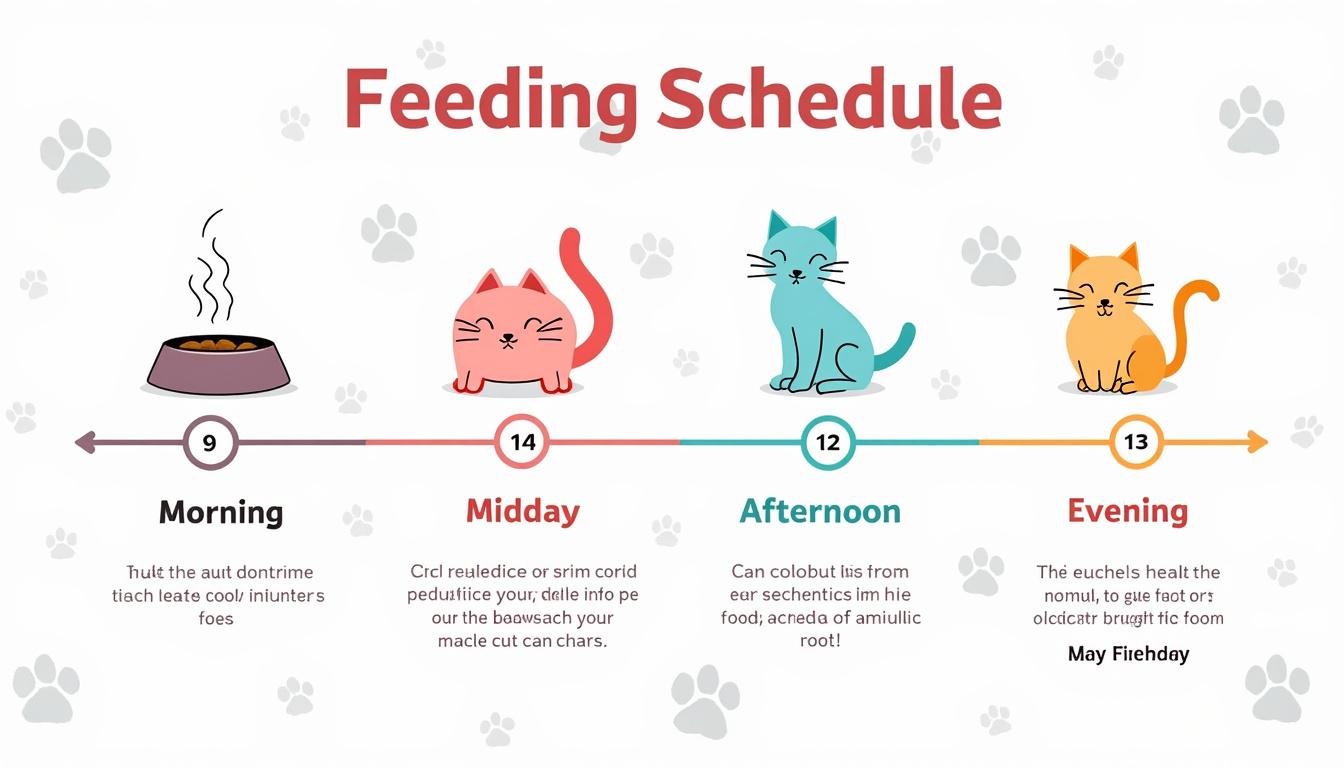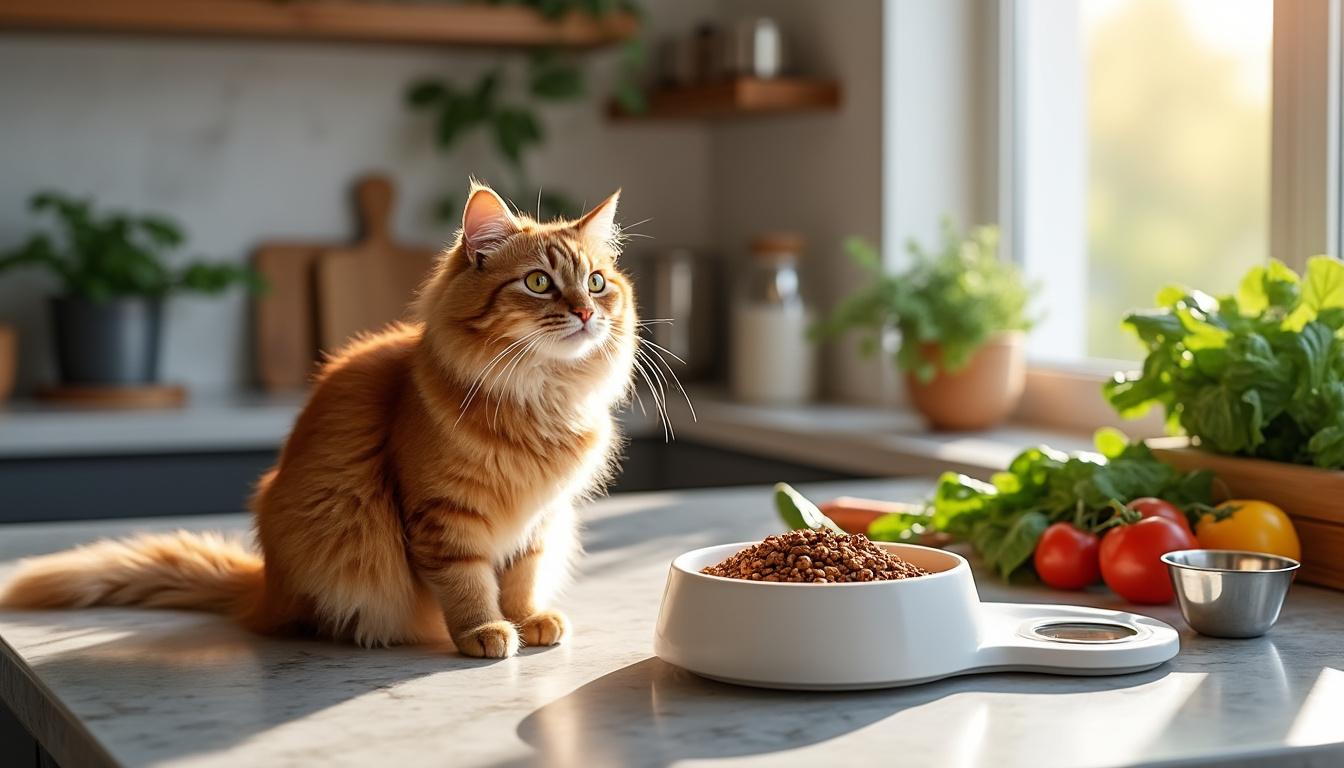When it comes to ensuring your furry little friend stays healthy and happy, understanding how much to feed your cat each day is crucial. This can be a bit tricky, as different cats have different needs based on factors like their age, weight, and activity level. Whether you’re a first-time cat owner or have a household full of felines, grasping the intricacies of cat nutrition and feeding habits can make all the difference. In this piece, we’ll delve into the right amount of food for your cat, considering various diets including wet, dry, and combinations. Plus, we’ll touch on how many meals per day is ideal for promoting optimal health within your furry companion.
As you navigate through your cat’s dietary requirements, this guide will also cover how to measure portions effectively, the importance of monitoring your cat’s weight, and ways to adjust food intake based on life stages. Whether it’s Royal Canin, Purina, or Blue Buffalo, understanding the nutritional content and feeding recommendations on packaging can empower you to make informed choices for your cat’s diet.
- Understand your cat’s nutritional needs 🐾
- Determine proper portion sizes 🍽️
- Incorporate wet and dry food effectively 🌊
- Monitor weight and body condition regularly ⚖️
- Adjust feeding as your cat ages or health changes 🔄
Exploring Caloric Needs for Your Cat
One of the foundational aspects of determining how much to feed your cat lies in understanding their caloric needs. This begins with calculating their Resting Energy Requirements (RER), which can be estimated with a simple formula: weight in kilograms raised to the power of 0.75, multiplied by 70. This gives you a baseline for calories your cat needs to maintain their weight.
For example, if your cat weighs 5 kg, the calculation would be 5^0.75 x 70, resulting in approximately 265 calories. However, factors such as activity level play a significant role in adjusting this number. Active cats might need 1.2 times their RER, while those that are less active could require just their RER, and more energetic cats might need up to 1.4 times. Tailoring this caloric intake will help prevent obesity or malnourishment.
| Activity Level | Calories Multiplier |
|---|---|
| Inactive | 1.0 |
| Average Activity | 1.2 |
| High Activity | 1.4 |
Thus, knowing your cat’s activity level is key. For instance, a cat that loves to roam outdoors will likely burn more calories than one who lounges around all day. Additionally, senior cats might have different requirements compared to kittens, so understanding these subtleties is crucial.
Measuring Food Portions Accurately
Once you’ve established your cat’s caloric needs, the next step is to translate these into actual food portions. This is where many pet owners can succumb to confusion. Using a measuring cup might seem straightforward, but a study indicated that cat owners could unintentionally feed up to 80% more food than necessary when relying on volume-based tools.
Instead, it’s strongly recommended to weigh your cat’s food using digital scales. This provides an accurate measure and helps you stick to the prescribed feeding amounts. If your cat’s food label indicates feeding amounts based on body weight, be detailed in adhering to these guidelines. For instance, a specific brand may suggest 60 grams of dry food for each session based on your cat’s weight.
Tips for Portion Control:
- Weigh food regularly: Keep digital pet scales handy! 🏋️♂️
- Combine meals: Break down daily intake into multiple small meals. 🍽️
- Keep feeding charts: Refer to the provided charts on your cat food brands. 🗓️
This calculated approach to feeding not only ensures your kitty receives the right amount but also helps combat concerns of over or underfeeding. Remember that managing obesity is critical, and monitoring their weight along the way will inform any necessary changes.

The Wet vs. Dry Food Debate
Feeding your cat is not just about quantity, but also about quality. The age-old debate of wet food versus dry food has many cat parents scratching their heads. Each type has its own set of benefits and considerations that might sway your decision.
Advantages of Wet Food:
- 💧 Hydration: Wet food contains significantly higher moisture content (approx. 80%) compared to dry food (around 8%), making it a good option for maintaining hydration.
- 🐟 Palatability: Many cats find wet food more appetizing, especially older cats or those with dental issues.
- 🍽️ Ease of consumption: Soft textures can be easier for some cats to chew.
- 🔍 Nutrient quality: Higher-quality wet cat foods often contain more protein and fewer fillers, which aligns better with a feline’s natural diet.
On the other hand, dry food is not without its advantages either. It often comes with benefits like lower costs, convenience for owners who want to leave food out during the day, and dental benefits from its texture helping reduce plaque buildup. However, it’s essential to strike a balance. Most experts recommend a combination of both wet and dry food to tap into the benefits of each.
| Food Type | Benefits | Considerations |
|---|---|---|
| Wet Food | Hydration, taste, nutrition | Cost, spoilage, usage only at specific times |
| Dry Food | Convenience, cost-effective | Less moisture, potential for overeating |
Ultimately, the choice between wet and dry food—or a combination of both—depends heavily on your cat’s individual needs, preferences, and any specific health considerations. Consulting with your veterinarian may give insight tailored specifically to your furry companion.
Feeding Schedules: How Often to Feed Your Cat
With feeding amounts understood, the next question often revolves around timing. How many meals a day does a cat really need? The truth is that cats are natural grazers, which means they tend to eat small meals throughout the day rather than one or two big meals. Mimicking this natural instinct can be beneficial.
Many experts suggest that cats should ideally be fed at least two meals a day; however, splitting the total daily food into three to six meals is even better. This helps stabilize blood sugar levels and can lead to better digestion. Additionally, frequent meals might enhance hydration, as cats appear to drink more water when fed multiple times a day.
Tips for Feeding Frequency:
- 📅 Try automatic feeders: These can dispense meals at timed intervals, ensuring your cat gets the right amount no matter your schedule.
- 🐾 Use puzzle feeders: Engaging your cat mentally while they eat can help slow down their eating and provide stimulation.
- 📊 Monitor preferences: Every cat is unique. Observe your cat’s eating habits and adjust accordingly.
Make it a habit to provide a mix of wet food or dry food throughout the day to keep things interesting for your kitty. If you’re considering adding more feeding times into the mix, be vigilant about ensuring their overall calorie intake doesn’t exceed their needs. As with all things related to pet care, adjustments can be vital if you notice changes in your cat’s behavior, weight, or health.

Identifying Weight Issues in Your Cat
A crucial part of determining how much to feed your cat goes hand in hand with monitoring their weight. Identifying whether your feline is at their ideal weight, overweight, or underweight is essential in crafting the appropriate feeding plan. Performing a body condition score (BCS) evaluation is a straightforward method to assess your cat’s weight status.
When you evaluate your cat, take note of their waist when viewed from above and their ribs when you run your fingers along their sides. A healthy cat should have ribs that are easily felt but not visible, a noticeable waist, and a slight abdominal tuck when viewed from the side.
Common Signs of Weight Issues:
- 🔍 Obesity: Visible fat pads around the belly, legs, and neck; difficulty grooming;
- ⚖️ Underweight: Visible bones, lack of energy, and a pronounced abdomen.
For those cats showing signs of excess weight, slight caloric reductions or changes in their diets may be necessary. In some cases, working with your vet to establish a weight loss plan can further safeguard their health and well-being. Conversely, underweight cats might need additional calories, and understanding how to adjust portions by 20% can help them regain healthy weight.
| Weight Status | Recommended Actions |
|---|---|
| Overweight | Reduce food intake by 10-20%; consult a vet for tailored dieting. |
| Underweight | Increase food intake by 20%; evaluate underlying health issues. |
Ultimately, fostering a keen sense of awareness regarding your cat’s weight can lead to better overall health and longevity. Maintaining an open dialogue with your vet will keep you informed about the best strategies in managing your cat’s diet as they transition through different life stages.
How do I know if I’m feeding my cat enough?
Monitor your cat’s weight through regular assessments and perform a body condition score to determine if they are at a healthy weight based on their ribs, waist, and overall mass. Regular vet check-ups can also guide proper feeding amounts.
Can I feed my cat treats? How many?
Treats should make up no more than 10% of your cat’s total caloric intake for the day. Always adjust the main diet to compensate for treat calories.
How do I determine my cat’s ideal weight?
The best way to identify ideal weight involves assessing your cat’s body condition by looking at their shape and feel of bones; a vet can also provide valuable insights.
What is the best food type for cats?
The optimal food varies by cat; a balanced diet that can include high-quality wet and dry food is usually recommended. Brands like Purina, Royal Canin, and Hill’s Science Diet are great options.
How often should I feed my cat?
Cats should ideally have at least two meals a day, although multiple smaller meals can promote better digestion and blood sugar levels.

